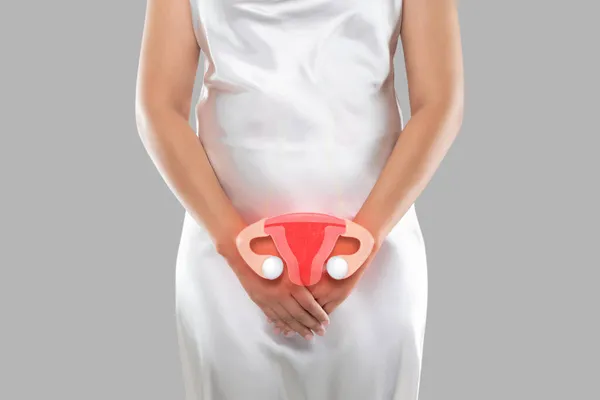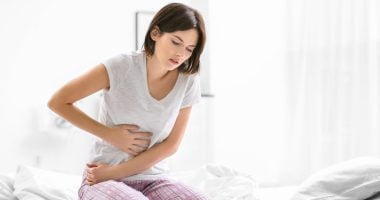Endometriosis is a medical condition that occurs when the tissue that normally lines the inside of the uterus (the endometrium) grows outside of the uterus. This can cause pain, heavy bleeding, and other problems. Endometriosis most commonly affects women of childbearing age, but it can occur at any age. There is no cure for endometriosis, but there are treatments that can help relieve symptoms and improve quality of life.
Causes of Endometriosis
The exact cause of endometriosis is unknown. However, there are several theories as to how endometriosis may develop:
• Retrograde menstruation: This theory suggests that during menstruation, some of the endometrial tissue flows backwards through the fallopian tubes and into the pelvis. This tissue then implants itself onto other organs in the pelvic region.
• Embryonic cell transformation: This theory suggests that during embryonic development, some cells destined to become part of the endometrium instead become transformed into endometrial-like cells. These cells then migrate to other parts of the body and implant themselves onto other organs.
• Surgical scar implantation: This theory suggests that during surgery (such as a C-section), endometrial tissue may attach itself to surgical scars or incisions. This tissue then begins to grow and proliferate outside of the uterus.
• Autoimmune disorder: This theory suggests that endometriosis may be caused by an autoimmune disorder where the body’s immune system attacks healthy tissues and cells.
• Hormone imbalance: This theory suggests that an imbalance of hormones, such as estrogen, may cause endometriosis. Estrogen is known to stimulate the growth of endometrial cells.

Symptoms
The symptoms of endometriosis can vary widely from woman to woman. Some women with endometriosis have no symptoms at all, while others may have severe pain and other debilitating symptoms. The most common symptom of endometriosis is pelvic pain, which can range from mild to severe. Pelvic pain is usually worse during menstruation and can be so severe as to interfere with a woman’s ability to work or participate in daily activities. Other common symptoms of endometriosis include:
-Pain during intercourse
-Painful bowel movements or urination
-Excessive bleeding during menstruation
-Infertility
If you are experiencing any of these symptoms, it is important to see your healthcare provider for an evaluation.
Diagnosis
There is no one definitive test for diagnosing endometriosis. Your doctor may suspect endometriosis based on your symptoms and a physical exam. They may also order one or more of the following tests:
Ultrasound: This imaging test can be used to look for landmarks associated with endometriosis, such as lesions on the ovaries or thickening of the uterine lining.
Laparoscopy: This is a surgical procedure in which a small incision is made in the abdomen and a thin, lighted tube called a laparoscope is inserted. This allows your doctor to directly visualize any endometrial tissue that has migrated outside of the uterus.
CA-125 blood test: This blood test looks for elevated levels of a protein called CA-125, which can sometimes be present in women with this condition.
Your doctor will likely recommend treatment even if they cannot definitively diagnose endometriosis through testing. If you are experiencing symptoms that suggestendometriosis, treatment can help relieve your symptoms and improve your quality of life.
Don’t miss | 11 Signs You’re Losing Too Much Blood During Period
Treatment Options
There are a number of different treatment options available for endometriosis. The best approach for you will depend on the severity of your symptoms and how much they are impacting your quality of life.
Some simple lifestyle changes can make a big difference for women with mild symptoms. These include over-the-counter pain relief medication, heating pads, and avoiding triggering foods and activities. For more severe cases, hormone therapy or laparoscopic surgery may be necessary.
Hormone therapy can help to reduce the pain and other symptoms associated to this condition by suppressing ovulation and thinning the uterine lining. This can be done with birth control pills, shots, or patches. Laparoscopic surgery is a minimally invasive procedure that removes endometrial tissue growths.
If you think you may be suffering from endometriosis, it is important to talk to your doctor so they can properly diagnose and treat the condition.
No matter which treatment option you and your doctor decide is best for you, it is important to remember that endometriosis does not have to control your life. With proper treatment, most women can go on to live happy, healthy lives.
Complementary and alternative treatments
There is no one-size-fits-all approach to treating endometriosis, and what works for one person may not work for another. Some women find relief from complementary and alternative treatments, either used alone or in combination with conventional medical treatment. Here are some complementary and alternative treatments for endometriosis
Acupuncture: This traditional Chinese medicine technique involves inserting thin needles into specific points on the body to relieve pain. Some studies have found that acupuncture can be helpful in relieving pelvic pain associated with endometriosis.
Herbal medicine: There are a number of herbs that have been traditionally used to treat various symptoms of endometriosis, including pain, inflammation, and heavy bleeding. These include ginger, turmeric, green tea, and dong quai. It’s important to talk to your doctor before taking any herbal supplements, as they can interact with other medications you may be taking.
Mind-body techniques: Techniques such as yoga, tai chi, and mindfulness meditation can help reduce stress and improve overall wellbeing. This can in turn help reduce symptoms of endometriosis, including pelvic pain.
Dietary modifications: Eating a healthy diet rich in fresh fruits and vegetables, whole grains, lean proteins, and healthy fats may help reduce the symptoms of endometriosis. Some women find relief from eliminating caffeine, dairy products, processed foods, and red meat from their diets.
Exercise: Regular physical activity is important for overall health and wellbeing – it can also have a positive impact on the severity of endometriosis symptoms. Low-impact exercises like walking or swimming are great options for people with endo as they don’t put too much strain on the body.
It’s important to discuss any complementary and alternative treatments with your doctor before trying them, as some may interact with other medications or treatments you are taking for endometriosis.
Also read | Black Cohosh Benefits for Women: Natural Relief for Menopause Symptoms
Prevention and Management Strategies
Endometriosis most commonly affects the ovaries, fallopian tubes, and the tissue lining the pelvis. In rare cases, endometriosis may also involve other organs such as the brain, lungs, and skin.
There is no cure for endometriosis, but there are treatments that can help relieve pain and other symptoms. Treatment options include medication, surgery, and lifestyle changes.
Medication
There are several different types of medication that can be used to treat endometriosis. These include hormone therapy, pain relievers, and anti-inflammatory drugs. Hormone therapy can help to shrink the size of endometrial growths and reduce inflammation. Pain relievers can help to relieve pain caused by endometriosis. Anti-inflammatory drugs can also help to reduce inflammation and pain.
Surgery
Surgery is sometimes used to remove endometrial growths or to repair damage caused by endometriosis. Surgery is not a cure for endometriosis, but it can help to improve symptoms.
Lifestyle changes
Making some lifestyle changes may also help to relieve symptoms of endometriosis. These changes can include exercising regularly, reducing stress, and increasing fiber intake.
Conclusion
Endometriosis can be a difficult condition to cope with, but understanding it is the first step in finding effective treatments. While there is no cure for this condition, there are treatment options available that can help manage symptoms and improve overall quality of life. Knowing what causes the disease and recognising its signs and symptoms is key to getting an accurate diagnosis and finding the best treatment plan for you. With support from medical professionals, lifestyle changes and medication or surgery if necessary, living with endometriosis doesn’t have to be overwhelming.









